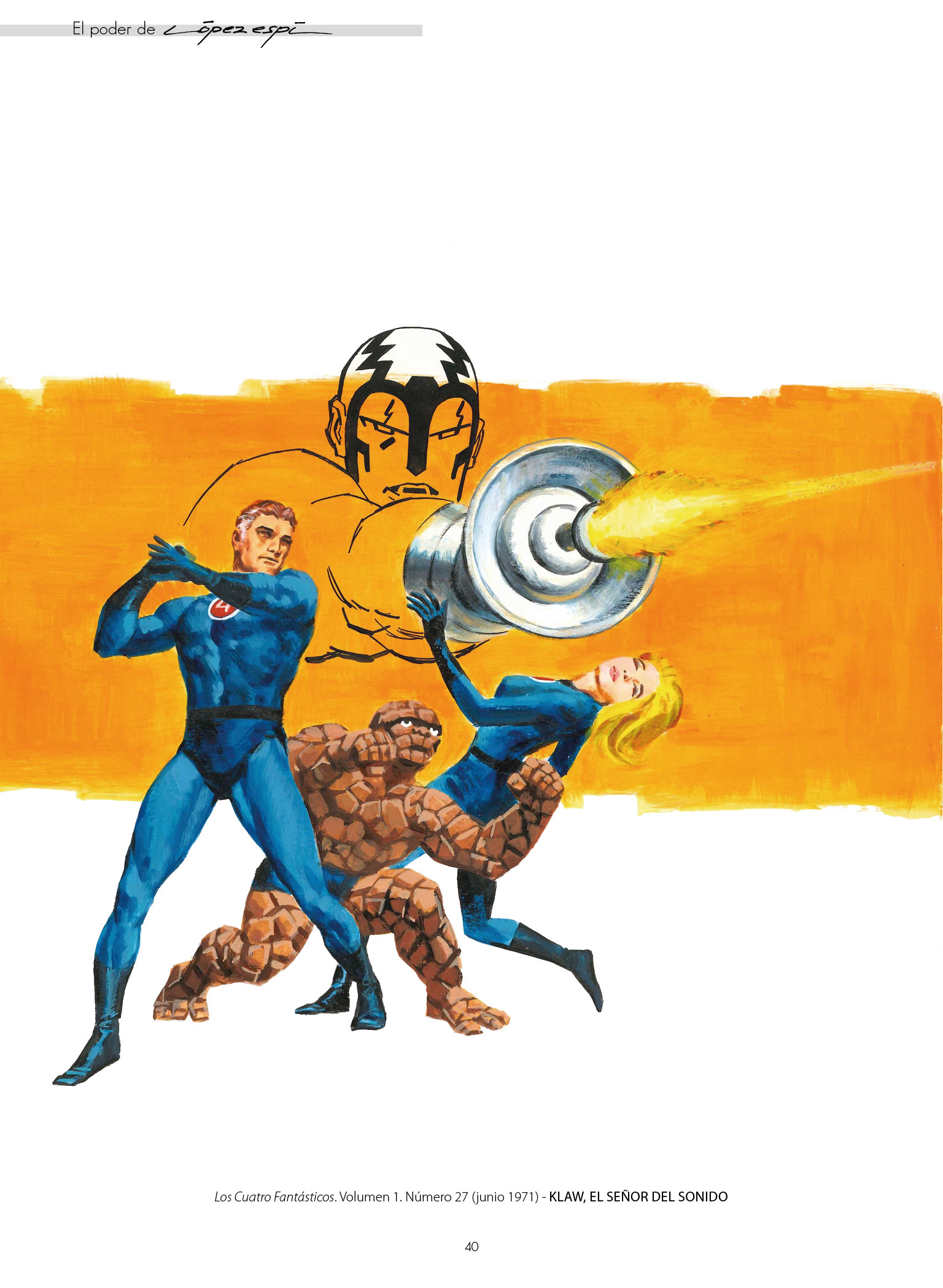Comic Greek heroes are the 'new' superheroes
There is a Spanish Marvel.
And she has a retro air, with more realistic and expressive superheroes, from the colors of the costumes (between watercolor and gouache) to their psychology captured in close-ups or the subtlety (and spectacularity) of their movements.
Spiderman, Captain America, Thor, Iron Man and the entire Marvel troupe arrived in Spain in 1969 at the hands of the Vértice publishing house.
The first Marvel comic -which had already been running for three decades in the United States- was an adventure of The Fantastic Four.
But for his Spanish landing, Vértice changed the format of the American
comic book
and adapted the covers (these yes, in full color).
For many Spaniards, their first contact with Spiderman was not with the character created by Stan Lee, but with the hero drawn by a young Rafael López Espí (Barcelona, 1937), who would end up becoming the official Marvel cover artist.
"We didn't know the characters.
It was the first time we saw them and sometimes we didn't even know what colors they had because the Americans sent black and white photocopies.
I put a yellow brass uniform on Doctor Death because he looked better, but later it turned out that it was iron gray...», recalls López Espí in his studio in Vilassar de Mar, a coastal town 30 kilometers from Barcelona.
'The Fantastic Four' was the first Marvel comic published in Spain.
At 84 years old, his studio is still that of the cartoonist of the historical Marvel: brushes and aniline pots (similar to watercolour), Pelikan ink, an immense gallery of magazines and an entire encyclopedic library with volumes from the Bauhaus, monographs from classical painters, volumes of Australian fauna, The Great Book of the American West... «Now everything is on the internet.
But before, if you had to draw a train from 50 years ago... you needed an encyclopedia”, says López Espí.
Among the thousands of volumes in his studio you can find curiosities such as the comics that were never published in Spain, the horror comics and the westerns for the German and British markets.
From Barcelona, López Espí drew for the whole world: Mexico, the United States, Sweden, Italy... And although today he is a cult author for lovers of the ninth art (you cannot make an exhibition of the history of national comics without one of his originals), his figure continues to be little claimed, like so many other authors of the time.
But in the 70s he was in all the kiosks and he was noticed;
he drew his covers so that they could be seen from afar: that blue spot on a yellow background was a new superhero in full contortion called Spiderman ("before, we had only seen the Spider from the United Kingdom,
«The newsstands were full of magazines of all kinds.
And these heroes were new, we had to attract attention.
That is why I greatly simplified the covers with contrasting colored spots, it was a publicity stunt to make an impact”, says López Espí.
Some of her
flecks of color
from him are
pure pop art
, from a navy-suited Black Widow framed in an orange sphere to a multiplied Warhol-esque Iron Man.
A minimalism that contrasted with the motley American covers, full of details, characters and speech bubbles.
Why did Spain have its own covers?
Vertex changed the American format to publish its so-called pocket tacos.
«From a page with nine vignettes, Vértice made three, cutting them and with a different composition.
Thus, a 20-page comic book became 60 in Spain.
It was a rag and the reader realized it, ”acknowledges López Espí of that first stage.
Another limitation was censorship.
«There were some social rules that we all knew... I couldn't put a kiss on the cover, or a scene that was too bloody...», he laughs.
post war child
Little Rafael was born in the middle of the Civil War.
Despite the scarcity of means in the post-war period, his training was eminently practical as an adolescent apprentice to cartoonists such as
Jordi Macabich
(author of
Inspector Dan
and founder of the Bardon Art agency) or
Tunet Vila
(who signed the popular adventures of Pito. The little soldier).
At the age of 16 he got his first job at the Editorial Symbol to draw war stories, newspaper strips, inking... With what he earned he was able to pay for a year of Fine Arts and entered the mythical agency Illustrated Selections of
Josep Toutain
.
Then came Vértice, where it remained until its closure in 1983, when the Bruguera publishing house took over the rights from Marvel.
"Vertex went from publishing 20,000 issues in the good times to 300, it was unsustainable," he admits.
Rafael López Espí in 1963, at the Illustrated Selections agency.
Today, those new superheroes seem to have always been there and star in the biggest blockbuster movies.
"I can't stand superhero movies, it's an aberration in form.
All the spirit of the comic is lost, where you contemplate the drawing and slowly enter the story.
In the movies, everything goes so fast... So much action, action and action takes away all the substance", criticizes López Espí with his eternal cartoonist's gaze.
The Spanish Vampirella by Enric Torres
One cannot speak of Rafael López Espí without mentioning his colleague Enric Torres (Barcelona, 1940), the first Marvel cover artist for Vértice.
Although Enrich (as he signed) will always be associated with the most suggestive and seductive Vampirella.
He drew more than 50 covers of the queen of darkness (his are the most sought after by international fans), as well as other fantasy and horror works for the American magazines 'Eerie' and 'Creepy'.
The Dolmen publishing house also recovers his work in the new 'The Marvel Covers of Vértice', a compendium of 662 covers signed by López Espí and Torres, who for years formed a luxury tandem.
Conforms to The Trust Project criteria
Know more
Barcelona
United States
comic

